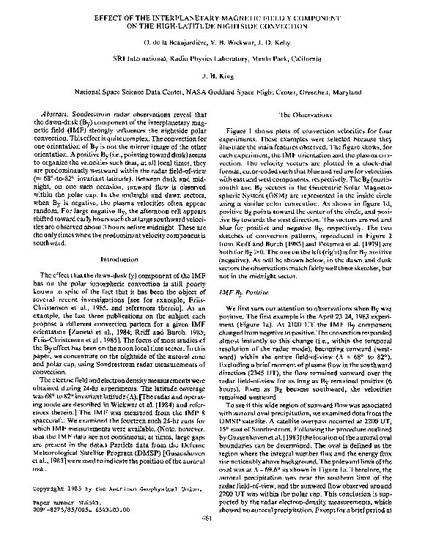
Sondrestrom radar observations reveal that the dawn‐dusk (By) component of the interplanetary magnetic field (IMF) strongly influences the nightside polar convection. This effect is quite complex. The convection for one orientation of By is not the mirror image of the other orientation. A positive By (i.e., pointing toward dusk) seems to organize the velocities such that, at all local times, they are predominantly westward within the radar field‐of‐view (≃68°‐to‐82° invariant latitude). Between dusk and midnight, on one such occasion, sunward flow is observed within the polar cap. In the midnight and dawn sectors, when By is negative, the plasma velocities often appear random. For large negative By, the afternoon cell appears shifted toward early hours such that large southward velocities are observed about 3 hours before midnight. These are the only times when the predominant velocity component is southward.

Published by American Geophysical Union in Geophysical Research Letters. Publisher PDF available for download through link above.